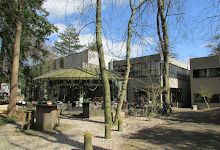Archive number: 50
Title: Mother Focus
Main Album: Mother Focus
Track number: 1
Genre: Progressive Rock Instrumental
Studio: Decca Studios, Hollywood, Los Angeles, California (later Studio 55)
Length: 3' 03”
Composer: Jan Akkerman, Thijs van Leer, Bert Ruiter
Musicians: Jan Akkerman – Acoustic guitars, Electric guitars with talkbox; Thijs van Leer – Piano, Hammond organ, Electric piano; Bert Ruiter – Bass; David Kemper – Drums, Congas
Producer: Hubert Terheggen/Focus
Engineer: Eric Prestidge
Label: LP – Polydor, Atco, Philips, EMI
Date of recording/release: Recorded 1975, released October 1975. LP – 1975, 1977, CD - 1988
Alternative version: This is a remake of the track originally recorded as Glider, then abandoned but finally preserved on Ship of Memories
Notes: The track begins with acoustic guitar (00:00-00:04) then piano (00:00-00:07) and a high hat (00:08) then bass (00:11) and soon the whole band is playing together with Akkerman working the talk box upfront. At 00:33 van Leer adds classical piano chords and an operatic scat vocal. This all comes to a climax at 01:03. It is followed by a riff from Akkerman while van Leer switches to the organ (01:04-01:36). This eventually winds down before getting back to the original rhythm (01:37-02:09) when it is time for the operatic vocal to come in again (02:10-02:39). This again until drums and voice predominate backed by the band and building to a final climax (02:40-02:57) and the briefest talk box coda (02:58-03:03).
A note on the talk box (from Wikipedia)
A talk box is an effects device allowing a musician to modify the sound of his instrument by changing the shape of his mouth. The effect can be used to shape the frequency content of the sound and apply speech sounds (in the same way as singing) onto a musical instrument, typically a guitar or keyboard. An effects pedal is usually used. This contains a speaker attached with an air tight connection to a plastic tube, however, it can come in other forms. The speaker is generally in the form of a horn driver, the sound generating part of a horn speaker with the horn replaced by the tube connection. The box has connectors for the connection to the speaker output of an amplifier and a connection to a normal instrument speaker. A foot-operated on/off switch on the box directs the sound either to the talkbox speaker or the normal speaker. The other end of the tube is taped to the side of a microphone, extending enough to direct the reproduced sound in or near the performer's mouth.
When activated, the sound from the amplifier is reproduced by the speaker in the talkbox and directed through the tube into the performer's mouth. The shape of the mouth filters the sound, with the modified sound being picked up by the microphone. The shape of the mouth changes the harmonic content of the sound in the same way it affects the harmonic content generated by the vocal folds when speaking.
The performer can vary the shape of the mouth and tongue position, changing the sound of the instrument being reproduced by the talkbox speaker. The performer can mouth words, with the resulting effect sounding as though the instrument is speaking. This "shaped" sound exits the performer's mouth, and when it enters a microphone, an instrument/voice hybrid is heard. The sound can be that of any musical instrument, but the effect is mostly commonly associated with the guitar. The rich harmonics of an electric guitar are shaped by the mouth producing a sound very similar to voice, effectively allowing the guitar to appear to "speak".
Pete Drake, a Nashville mainstay on the pedal steel guitar, first used a talk box in 1964. There is controversy over who invented the commercial device. Bob Heil has claimed he invented it but there is clearly a prior example in the form of the Kustom Electronics device, "The Bag", which is the same concept housed in a decorative bag slung over the shoulder like a wine bottle. This appeared in 1969, two years before Heil's Talk Box. The Bag is said to have been designed by Doug Forbes, who states that the exact same concept (horn driver attached to a plastic tube and inserted into the mouth) had previously been patented as an artificial larynx. In 1973, Heil gave his talk box to Peter Frampton as a Christmas present. Frampton first heard it when Stevie Wonder used it. Then when playing guitar for George Harrison, he saw Pete Drake use it with a pedal steel guitar. He used it extensively on his album Frampton Comes Alive! Due to the success of the album, Frampton became somewhat synonymous with the device. Other early adopters were Jeff Beck and Joe Walsh of the Eagles (in 1973). Akkerman was probably first aware of Joe Walsh though he played with Bogert and Appice who played with Beck.





















No comments:
Post a Comment